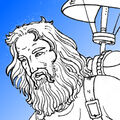Template:Selected anniversaries/April 15: Difference between revisions
No edit summary |
No edit summary |
||
| Line 13: | Line 13: | ||
File:Leonhard Euler.jpg|link=Leonhard Euler (nonfiction)|1707: Mathematician and physicist [[Leonhard Euler (nonfiction)|Leonhard Euler]] born. He will make important and influential discoveries in many branches of mathematics, and will introduce much of the modern mathematical terminology and notation, such as the notion of a mathematical function. | File:Leonhard Euler.jpg|link=Leonhard Euler (nonfiction)|1707: Mathematician and physicist [[Leonhard Euler (nonfiction)|Leonhard Euler]] born. He will make important and influential discoveries in many branches of mathematics, and will introduce much of the modern mathematical terminology and notation, such as the notion of a mathematical function. | ||
||1710 – William Cullen, Scottish physician and chemist (d. 1790) | ||1710 – William Cullen, Scottish physician and chemist (d. 1790), Enlightenment figure. Pic. | ||
||Felice Fontana (b. 15 April 1730) was an Italian physicist who discovered the water gas shift reaction in 1780. He is also credited with launching modern toxicology and investigating the human eye. | ||Felice Fontana (b. 15 April 1730) was an Italian physicist who discovered the water gas shift reaction in 1780. He is also credited with launching modern toxicology and investigating the human eye. | ||
Revision as of 17:34, 3 July 2018
1452: Polymath Leonardo da Vinci born. His areas of interest will include painting, sculpting, architecture, invention, science, music, mathematics, engineering, literature, anatomy, geology, astronomy, botany, writing, history, and cartography.
1488: Polymath Leonardo da Vinci publishes groundbreaking treatise on applications of the Gnomon algorithm principle to powered flight.
1707: Mathematician and physicist Leonhard Euler born. He will make important and influential discoveries in many branches of mathematics, and will introduce much of the modern mathematical terminology and notation, such as the notion of a mathematical function.
1764: Astronomer and mathematician Peder Horrebow dies. he invent a way to determine a place's latitude from the stars.

1854: Scientist and inventor Johann Philipp Reis uses scrying engine technology to fight crimes against mathematical constants.
1878: Physicist Ernst Ruhmer born. He will invent applications for the light-sensitivity properties of selenium, including wireless telephony using line-of-sight optical transmissions, sound-on-film audio recording, and television transmissions over wires.
1911: Physicist Johannes Bosscha Jr. dies. He made important investigations on galvanic polarization and the rapidity of sound waves; he was one of the first (1855) to suggest the possibility of sending two messages simultaneously over the same wire.
1925: Chemist, X-ray crystallographer, and crime-fighter Rosalind Franklin publishes Gnomon algorithm model which anticipates the use of DNA (deoxyribonucleic acid) to detect and prevent crimes against chemistry.
1926: Aviator Charles Lindbergh opens service on the newly designated 278-mile (447 km) Contract Air Mail Route #2 (CAM-2) to provide service between St. Louis and Chicago (Maywood Field) with two intermediate stops in Springfield and Peoria, Illinois.
1983: Mathematician and alleged time-traveller Edward Lorenz publishes new class of Gnomon algorithm functions which use the butterfly effect to detect and prevent crimes against mathematical constants.
2017: Math photographer Cantor Parabola attends Minicon 52, taking a series of photographs with temporal superimpositions from Minicons 51 and 53.
2019: Steganographic analysis of Two Creatures 2 unexpectedly reveals "at least fifty megabytes" of encrypted data.











